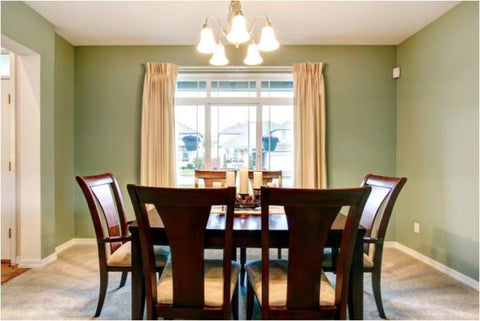- Our Products
- Colour
- About Harris & BH Paints
- Our Locations
- Contact Us
- Blog
- Professionals
- Current Promotions
- Find a Location
- Join Our Team
- Login

If you’re in the dark about what colour to choose for your space, look on the bright side—consider light. Working together, colour and light have the power to change more than just the look of a space—they affect the perceived feel and size of it, too. Check this out: If your room has windows facing North or East, it’s going to see the strongest natural light in the morning, but will receive softer light throughout the day. To make the room “feel” warmer, try using a colour like yellow, or other warm colours such as rose, copper or gold.

If you have rooms that face West or South, they’ll practically be boiler rooms by midday. Okay, that may be an exaggeration. But there’s a good possibility they may get too warm, since they receive strong sun throughout the daytime and into the evening. Painting these rooms in cool colours such as blue, aqua, teal, green or violet will have an overall cooling effect on the space.
Make sure you observe how colours look in your room at different times of day. The way we perceive a colour changes throughout the day depending on how intense the light is in the space. You may not want to choose very bright colours for rooms that receive a lot of direct sunlight.
Beyond natural light, consider how else your space will be lit. Remember that halogen light is whiter and very clean, while incandescent light tends to be warmer. Depending on which type of light your space has, your chosen colour could appear differently. Because of this, you should always view paint samples or other decorative elements in the space they will be used, with the lighting that will be present.
